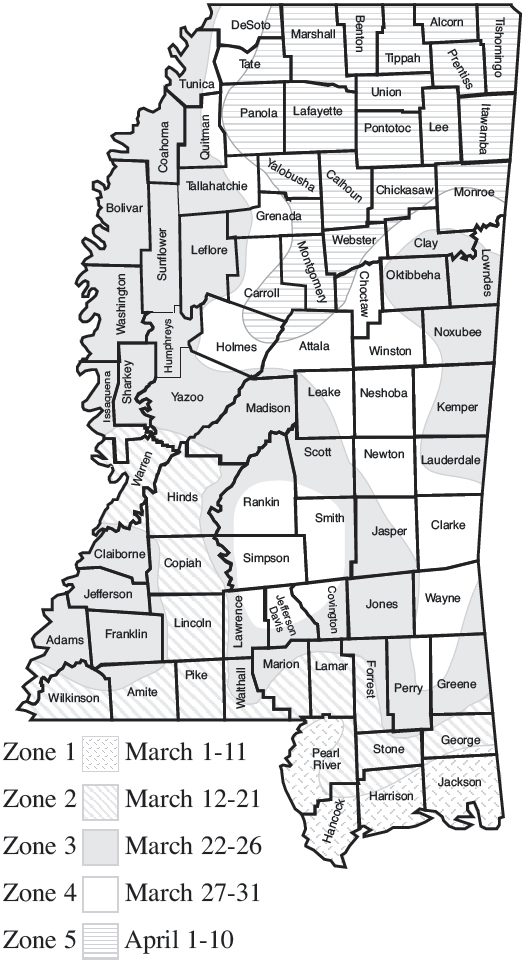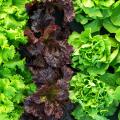Planting Zones
Zones Determine Planting Dates

Planting Zones – To use the map, find your county and
determinewhich zone it is located in. Then find the vegetable
planting dates for your zone on the chart.
Use the map and chart in this section to determine dates for planting vegetables in your garden. Use the map to identify the zone (1, 2, 3, 4, or 5) in which you garden. Some Mississippi counties are in only one zone, while others are in more than one.
The zones are based on weather data for the median (most frequent) dates of last freezes (temperature of 32 °F or less) in spring. In some years the last freeze occurs earlier, and in some years later, than the median dates. The zones are listed at the top of the chart. The cool- and warm-season vegetables are listed on the left, and the recommended planting dates make up the body of information in the chart.
Beets, for example, are recommended for planting in zone 1 from February 1 to March 1. The starting dates are 4 and 6 weeks before the last median frost date for the zone for cool-season vegetables, and 2 and 4 weeks after the last median frost date for warm-season vegetables.
The cut-off date for planting cool-season vegetables is to provide sufficient time for the vegetables to mature before the heat of summer. The cut-off date for planting warm-season vegetables is to permit maturity and harvest before disease, insect, and weather pressures become too great and before cold temperatures in the fall.
Most cool-season vegetables can be planted in both spring and fall. This gives two opportunities for successful harvests. Most warm-season vegetables can be planted over a period of several weeks ranging from midspring to mid-summer.
Multiple plantings at 10-day intervals of beans, corn, peas, radishes, and leafy greens within the recommended planting intervals provide for successive harvests.
Some of the cool-season vegetables like broccoli, cabbage, Chinese cabbage, cauliflower, collards, kale, spinach, and rutabagas produce better when grown in the fall. These plants mature as the weather is getting cooler, and they are of better quality and produce over a longer period of time.
Publications
News
Vegetable producers across the Southeast are invited to the 2025 Vegetable Field Day on July 23 at the Mississippi State University station in Verona, Mississippi.
If you grow your own vegetables, you will likely see at least a few pesky insects that want to feed on your plants. Slugs are one of the pests you may be noticing now.
Did you know yellow squash is in the pumpkin family and are 95 percent water?




